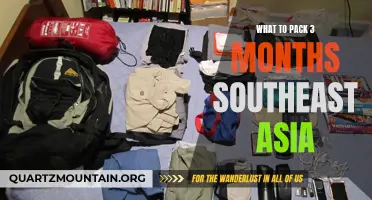
Are you ready to embark on an epic hiking adventure to Mount Rainier? Before you hit the trails, it's crucial to pack the essential items that will ensure a safe and successful journey. From sturdy hiking boots to a dependable backpack and everything in between, we've compiled a comprehensive list of must-have gear to make your Mount Rainier hiking experience one to remember. So, lace up your boots, grab your pack, and let's dive into the essential items you need for this awe-inspiring outdoor excursion.
What You'll Learn
- What are the essential items to pack for a hiking trip to Mount Rainier?
- Are there any specific clothing items or gear that are recommended for hiking at high altitudes on Mount Rainier?
- Should I pack any special equipment or supplies for camping overnight at Mount Rainier?
- Are there any food or water recommendations for hiking and camping at Mount Rainier?
- Are there any safety precautions or emergency items I should include in my packing list for Mount Rainier?

What are the essential items to pack for a hiking trip to Mount Rainier?
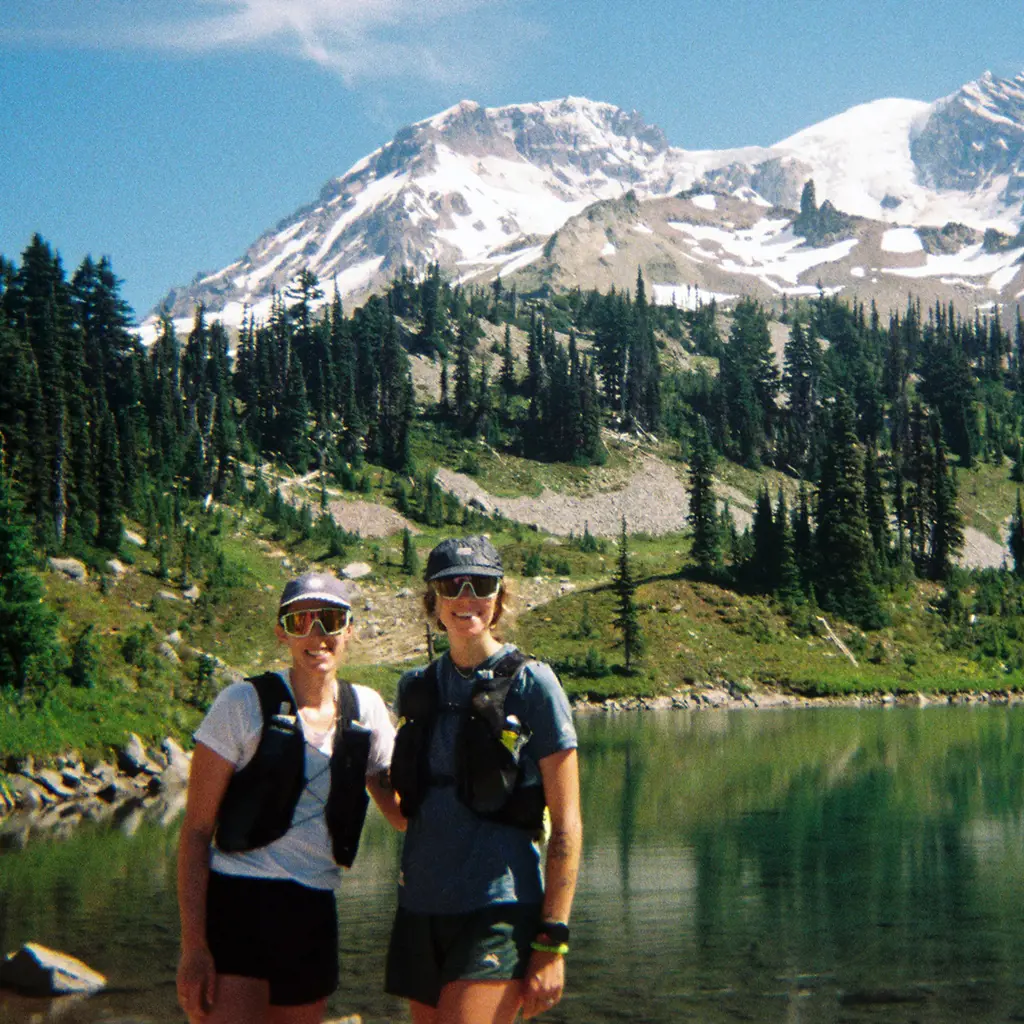
Mount Rainier, located in Washington state, is a popular hiking destination for outdoor enthusiasts. With its diverse terrain and breathtaking views, it offers a challenging and rewarding experience for hikers. Whether you are planning a day hike or a multi-day trek, it is important to come prepared with essential items to ensure a safe and enjoyable trip. Here are some key items to pack for a hiking trip to Mount Rainier:
- Clothing: Dressing in layers is crucial for hiking in Mount Rainier, as the weather conditions can change quickly. Start with a moisture-wicking base layer to keep you dry, followed by a insulating layer to retain heat. Finally, a waterproof and breathable outer layer will protect you from rain and wind. Don't forget to pack extra socks, gloves, and a hat for added warmth.
- Footwear: A sturdy pair of hiking boots is a must for navigating the rugged terrain of Mount Rainier. Look for boots with ankle support and good traction to ensure stability on steep slopes and rocky surfaces. It is also important to break in your boots before the trip to prevent blisters and discomfort.
- Navigation tools: Mount Rainier is a vast wilderness area with numerous trails, so having a map and compass is essential for staying on course. Consider bringing a GPS device or mobile app as well, but always have a backup navigation method in case of technological malfunctions. Familiarize yourself with the trail map beforehand and plan your route accordingly.
- Backpack: A comfortable and well-fitting backpack is essential for carrying all your gear and supplies. Opt for a backpack with a capacity of at least 30 liters for day hikes and 50-70 liters for multi-day trips. Look for features such as padded straps, a hip belt, and multiple compartments for easy organization.
- Food and water: Stay hydrated and energized during your hike by packing plenty of food and water. Carry water bottles or a hydration reservoir with a capacity of at least 2 liters, and pack high-energy snacks such as granola bars, nuts, and dried fruits. If you plan on staying overnight, bring lightweight and easy-to-cook meals that require minimal preparation.
- First aid kit: Accidents and injuries can happen on the trail, so it is important to carry a basic first aid kit. Include items such as bandages, antiseptic wipes, painkillers, and blister treatment. Familiarize yourself with basic first aid procedures, such as treating blisters and sprains, before embarking on your trip.
- Emergency supplies: In case of unexpected circumstances or emergencies, it is important to be prepared with essential emergency supplies. These may include a headlamp or flashlight, a whistle for signaling, a space blanket or emergency shelter, a fire starter, and a multi-tool or pocket knife. Always let someone know your hiking plans and expected return time, and carry a fully charged cellphone for emergencies.
- Outdoor essentials: Don't forget to pack sunscreen, sunglasses, and a hat to protect yourself from the sun's harmful rays. Insect repellent and a small roll of toilet paper are also useful for keeping bugs and discomfort at bay. Carry a small trash bag to pack out any waste and leave no trace behind.
Before embarking on your hiking trip to Mount Rainier, make sure to research the trails, check the weather conditions, and be aware of any regulations or permits required. It is also advisable to hike with a companion or join a guided tour for added safety. By packing these essential items and being well-prepared, you can make the most of your hiking experience in the beautiful Mount Rainier National Park.
Essential Packing List for a Memorable Trip to Sedona, AZ
You may want to see also

Are there any specific clothing items or gear that are recommended for hiking at high altitudes on Mount Rainier?
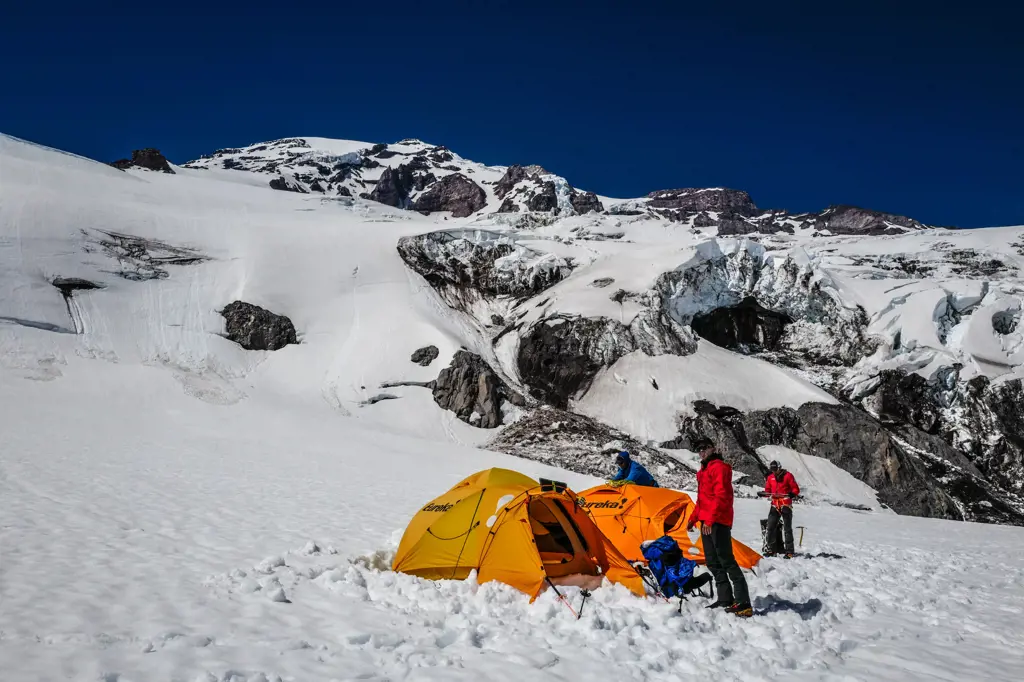
When hiking at high altitudes on Mount Rainier, it is crucial to have the right clothing and gear to ensure your safety and comfort. The weather conditions at high altitudes can be harsh and unpredictable, so it is important to come prepared with the necessary equipment. In this article, we will discuss some of the specific clothing items and gear that are recommended for hiking at high altitudes on Mount Rainier.
Layered clothing is essential for hiking at high altitudes on Mount Rainier. The temperature and weather conditions can change rapidly, so it is important to be able to adjust your clothing accordingly. It is recommended to wear a moisture-wicking base layer, such as a lightweight synthetic shirt and pants, to keep your body dry and comfortable. Over this, you can add an insulating layer, such as a fleece jacket or down sweater, to provide warmth. Finally, a waterproof and windproof shell jacket and pants should be worn as an outer layer to protect against the elements.
In addition to layered clothing, it is important to have the right footwear for hiking at high altitudes. Mount Rainier has rugged and uneven terrain, so it is recommended to wear sturdy hiking boots with ankle support. These boots should be waterproof and breathable to keep your feet dry and comfortable. It is also important to wear moisture-wicking socks to prevent blisters and keep your feet dry.
Other essential gear for hiking at high altitudes on Mount Rainier includes a backpack, trekking poles, and a hat or beanie. The backpack should be large enough to carry all of your gear, including extra clothing layers, food, water, and any necessary safety equipment. Trekking poles are helpful for navigating the uneven terrain and provide additional stability and support. A hat or beanie is essential for protecting your head from the sun and keeping you warm in colder temperatures.
It is also important to carry a map, compass, and GPS device to navigate the trails on Mount Rainier. The terrain can be challenging, and it is easy to get lost without proper navigation tools. Additionally, it is recommended to carry a first aid kit, emergency shelter, and sufficient food and water for your hike. It is always better to be over-prepared than under-prepared when hiking at high altitudes.
Lastly, it is recommended to check the weather forecast and trail conditions before embarking on your hike. The weather at high altitudes can be unpredictable, and it is important to be prepared for any changes or adverse conditions. It is also recommended to hike with a partner or in a group for safety reasons.
In conclusion, hiking at high altitudes on Mount Rainier requires specific clothing items and gear to ensure your safety and comfort. Layered clothing, sturdy hiking boots, a backpack, trekking poles, and navigation tools are all essential for a successful hike. It is important to be prepared for changing weather conditions and to carry necessary safety equipment. Always check the weather forecast and trail conditions before hiking, and consider hiking with a partner or in a group for added safety. With the right clothing and gear, you can enjoy your hiking experience on Mount Rainier to the fullest.
Essential Items to Pack for a Thrilling Two-Day Sailing Race
You may want to see also

Should I pack any special equipment or supplies for camping overnight at Mount Rainier?
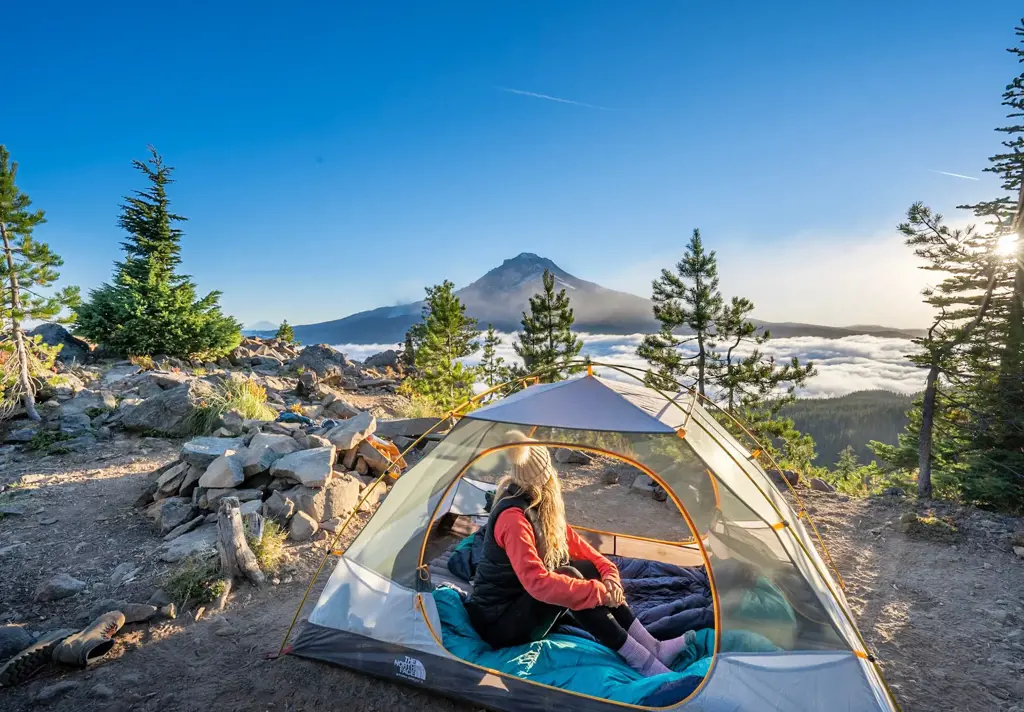
When planning a camping trip to Mount Rainier, it's important to consider what special equipment and supplies you should pack for an overnight stay. Mount Rainier is a beautiful and diverse national park, but its rugged terrain and unpredictable weather can present unique challenges. By being prepared and packing the right gear, you can ensure a safe and enjoyable camping experience.
One of the most important items to pack for camping at Mount Rainier is a sturdy tent. The park is known for its strong winds and sudden storms, so you'll want a tent that can withstand these conditions. Look for a tent that is made of durable materials and has strong poles and stakes. It's also a good idea to bring a tarp or groundsheet to protect the bottom of your tent from moisture.
In addition to a tent, you'll also want to pack a warm sleeping bag and sleeping pad. Mount Rainier can get chilly at night, even in the summer months, so it's important to have gear that will keep you warm and dry. Look for a sleeping bag that is rated for the temperature range you expect to encounter, and consider bringing a sleeping pad for added comfort and insulation.
When it comes to cooking and eating during your camping trip, there are a few items that are essential. A portable stove or campfire cooking equipment is a must, as open fires are not allowed in most areas of Mount Rainier. You'll also need pots, pans, and utensils for cooking, as well as plates, bowls, and utensils for eating. Don't forget to pack a cooler or food storage containers to keep your perishable items safe.
While there are water sources available in some areas of Mount Rainier, it's always a good idea to bring your own water filter or purification tablets. These can ensure that you have access to clean drinking water throughout your trip. Additionally, consider bringing a collapsible water container or hydration pack to carry water with you as you explore the park.
Other essential items to pack include a headlamp or flashlight, a first aid kit, and a map or GPS device. These can help you navigate the park and handle any unexpected situations that may arise. It's also a good idea to pack extra clothing layers, as the weather in Mount Rainier can change rapidly.
In conclusion, when camping overnight at Mount Rainier, it's important to pack the right equipment and supplies to ensure a safe and enjoyable trip. This includes a sturdy tent, warm sleeping bag and pad, cooking and eating essentials, water purification tools, and other essential items like a headlamp, first aid kit, and map. By being prepared and packing the necessary gear, you can have a memorable camping experience at one of the most beautiful national parks in the United States.
Essential Packing Tips for Your Disney Vacation: A Complete Guide by Disney Tourist Blog
You may want to see also

Are there any food or water recommendations for hiking and camping at Mount Rainier?
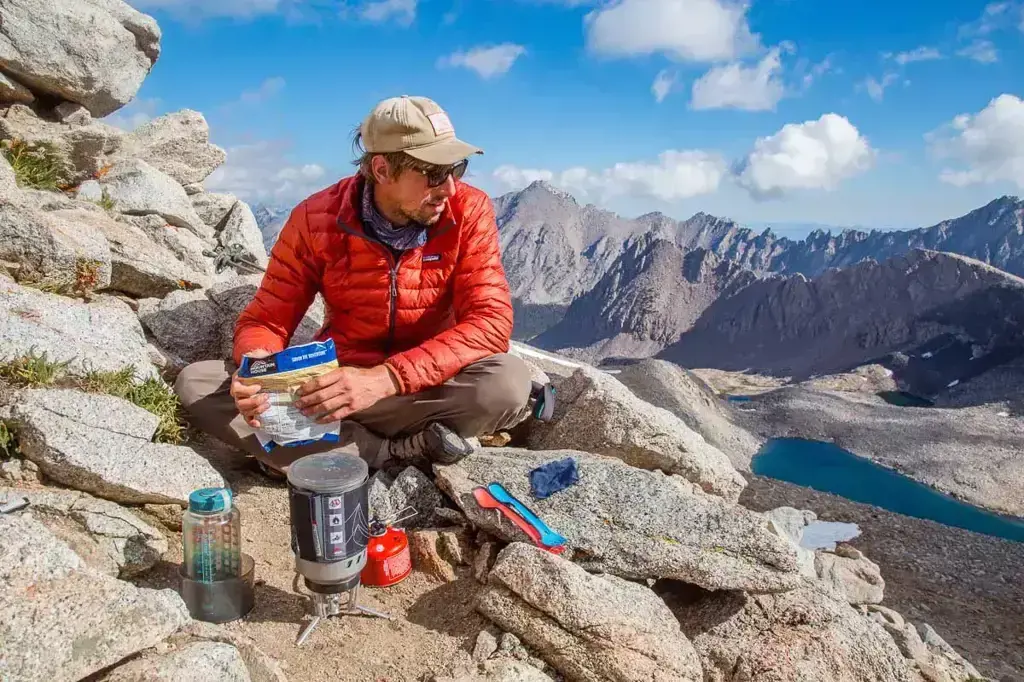
When hiking and camping at Mount Rainier, it is important to plan and prepare your meals and hydration properly to ensure a safe and enjoyable experience. The high altitude and rugged terrain of Mount Rainier can be physically demanding, so having the right food and water will help keep your energy levels up and prevent dehydration. Here are some recommendations for food and water when hiking and camping at Mount Rainier.
- Pack lightweight, calorie-dense foods: When hiking at high altitudes, it is important to get enough calories to fuel your body. Choose lightweight foods that are high in protein, carbohydrates, and healthy fats. Examples of calorie-dense foods include nuts, dried fruits, energy bars, jerky, and peanut butter.
- Stay hydrated: Hydration is key when hiking and camping. Mount Rainier has many streams and rivers where you can refill your water bottles or hydration bladder. However, it is important to treat or filter your water to remove any potential contaminants. You can use water filters, purifying tablets, or boil the water for at least one minute to make it safe for consumption.
- Pack enough water: While there are water sources along the trails, it is always a good idea to carry enough water with you, especially when camping at high altitudes or during dry seasons. The amount of water you need depends on the duration and intensity of your hike, but a general guideline is to carry at least 2 liters of water per person per day.
- Plan your meals: Before your trip, plan out your meals and snacks to ensure you have enough food for the duration of your hike or camping trip. Aim for a balanced diet that includes a mix of carbohydrates, proteins, and fats. Some ideas for meals include instant noodles, dehydrated meals, canned tuna or chicken, couscous, and oatmeal. Don't forget to pack some snacks such as granola bars, trail mix, and fresh fruits.
- Consider dietary restrictions: If you have any dietary restrictions or food allergies, make sure to plan your meals accordingly. There are many options available in stores for vegan, gluten-free, or other dietary needs. You can also bring your own pre-packaged meals or ingredients that suit your requirements.
- Practice proper food storage: When camping, it is crucial to store your food properly to prevent wildlife encounters. Mount Rainier is home to bears and other wildlife, so it is important to keep your food safe and secure. Use bear-resistant food storage containers or hang your food from a tree at least 10 feet off the ground and 4 feet away from the trunk. Avoid storing food in your tent to prevent attracting animals.
- Bring cooking equipment: Depending on your camping preferences, you may need to bring cooking equipment such as a stove, pots, and utensils. Lightweight and portable cooking gear is recommended for backpacking trips. If you plan to cook at your campsite, make sure to check the park's regulations regarding campfires and cooking stoves.
In conclusion, when hiking and camping at Mount Rainier, it is essential to pack calorie-dense, lightweight foods, stay hydrated, and plan your meals and snacks accordingly. Follow proper food storage guidelines to prevent wildlife encounters, and bring any necessary cooking equipment. By being prepared with the right food and water, you can fully enjoy your outdoor adventure at Mount Rainier.
Essential Packing List for a Spring Trip to Big Bend National Park
You may want to see also

Are there any safety precautions or emergency items I should include in my packing list for Mount Rainier?
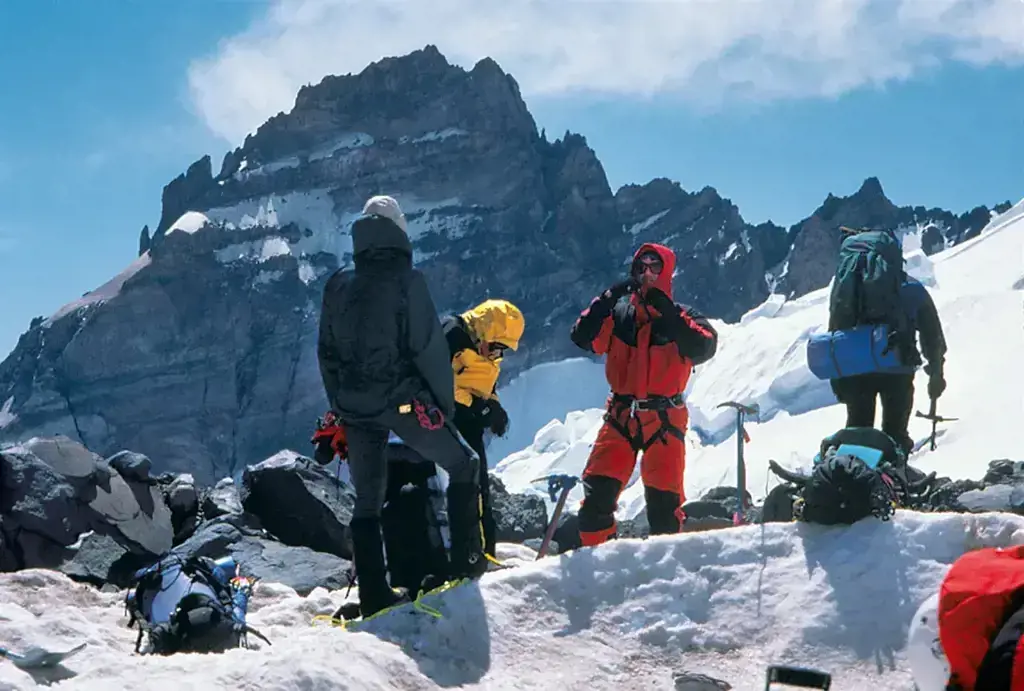
When embarking on a trip to Mount Rainier, it is essential to be well-prepared and aware of the potential risks and hazards associated with the mountain. While it offers breathtaking views and incredible hiking opportunities, Mount Rainier is a challenging environment that requires careful planning and precautions. To ensure your safety during your visit, here are some safety precautions and emergency items to include in your packing list.
Research and Plan:
Before setting off on your adventure, it is crucial to research and understand the current weather conditions, route difficulties, and potential hazards on Mount Rainier. Consider consulting with park rangers, reading guidebooks, and checking online resources to gather as much information as possible.
Navigation Tools:
Carrying navigation tools, such as a map, compass, and GPS device, is essential to stay on track and navigate accurately. Familiarize yourself with the route before you begin your journey and mark key landmarks or waypoints on your map.
Proper Clothing:
The weather on Mount Rainier can be extreme and unpredictable, even during the summer months. It is crucial to dress appropriately for the conditions and dress in layers. Start with moisture-wicking base layers, add insulating mid-layers, and top it off with a waterproof and wind-resistant outer layer. Don't forget to bring gloves, a hat, and sunglasses to protect yourself from the sun and cold temperatures.
Adequate Footwear:
Invest in sturdy, waterproof hiking boots with ankle support to navigate the rugged terrain and prevent injuries. Make sure your boots are broken in before your trip to avoid blisters or discomfort during the hike.
Safety Equipment:
Carrying essential safety equipment is paramount for any mountain adventure. Items to include in your pack should be a headlamp, hiking poles for stability, a whistle to attract attention in case of an emergency, and a first aid kit that includes supplies for minor injuries.
Sufficient Food and Water:
Pack enough food and water to sustain yourself for the duration of your hike. Drinking water sources may not be easily accessible, so consider bringing a water filter or treatment tablets to purify water from natural sources if needed.
Emergency Shelter:
In case you encounter unexpected weather or an emergency situation, it's wise to carry a lightweight emergency shelter, such as a tarp or bivy sack, to provide shelter and protection from the elements.
Emergency Communication:
Bringing a fully charged cell phone and a portable power bank will allow you to communicate in case of an emergency. However, it's important to note that cell reception in mountainous areas may be limited or non-existent. Consider carrying a personal locator beacon (PLB) or satellite communication device for reliable emergency communication.
Leave No Trace Principles:
Lastly, practice leave no trace principles by disposing of your waste properly and leaving the natural environment undisturbed. Carry out all trash and waste with you and respect the wildlife and vegetation.
Remember, these are just some of the essential safety precautions and emergency items to consider when visiting Mount Rainier. It is crucial to evaluate your skills, experience, and physical fitness level before attempting any hike or mountaineering expedition. Always prioritize safety and be prepared for unexpected situations.
Essential Items to Pack for Your Cozumel Cruise Vacation
You may want to see also
Frequently asked questions
When packing for a trip to Mount Rainier, it is important to be prepared for changing weather conditions. Dressing in layers is key, as the temperature can vary greatly throughout the day. Make sure to bring a waterproof and breathable jacket, as rain is common in the area. It is also a good idea to pack hiking boots with good traction, as the terrain can be slippery. Don't forget to bring sunscreen and a hat to protect yourself from the sun at higher elevations. Finally, be sure to pack plenty of water and snacks, as there are limited options for food and drink within the park.
What are some essentials for hiking at Mount Rainier?
When hiking at Mount Rainier, it is essential to have the proper gear. In addition to dressing in layers and wearing sturdy hiking boots, it is important to bring a backpack to carry water, snacks, and any necessary equipment. Some other essentials to pack include a map or trail guide, a compass or GPS device, a first aid kit, and a headlamp or flashlight in case you end up hiking after dark. It is also a good idea to bring trekking poles for stability and to reduce strain on your joints. Lastly, don't forget to bring extra batteries for your electronic devices and a portable charger as there may not be outlets available on the trail.
What should I bring for camping at Mount Rainier?
Camping at Mount Rainier requires some additional gear compared to day hiking. It is important to have a tent, sleeping bag, and sleeping pad for a comfortable night's sleep. You will also need cooking equipment, such as a stove and cooking utensils, as open fires are generally not allowed in the park. It is a good idea to bring a bear-resistant food storage container or hang your food in a bear bag to prevent unwanted visits from wildlife. Additionally, pack extra warm clothing, as temperatures can drop significantly at night. And, of course, don't forget to bring all the necessary camping supplies, such as toilet paper, bug spray, and a small shovel for burying waste.
















